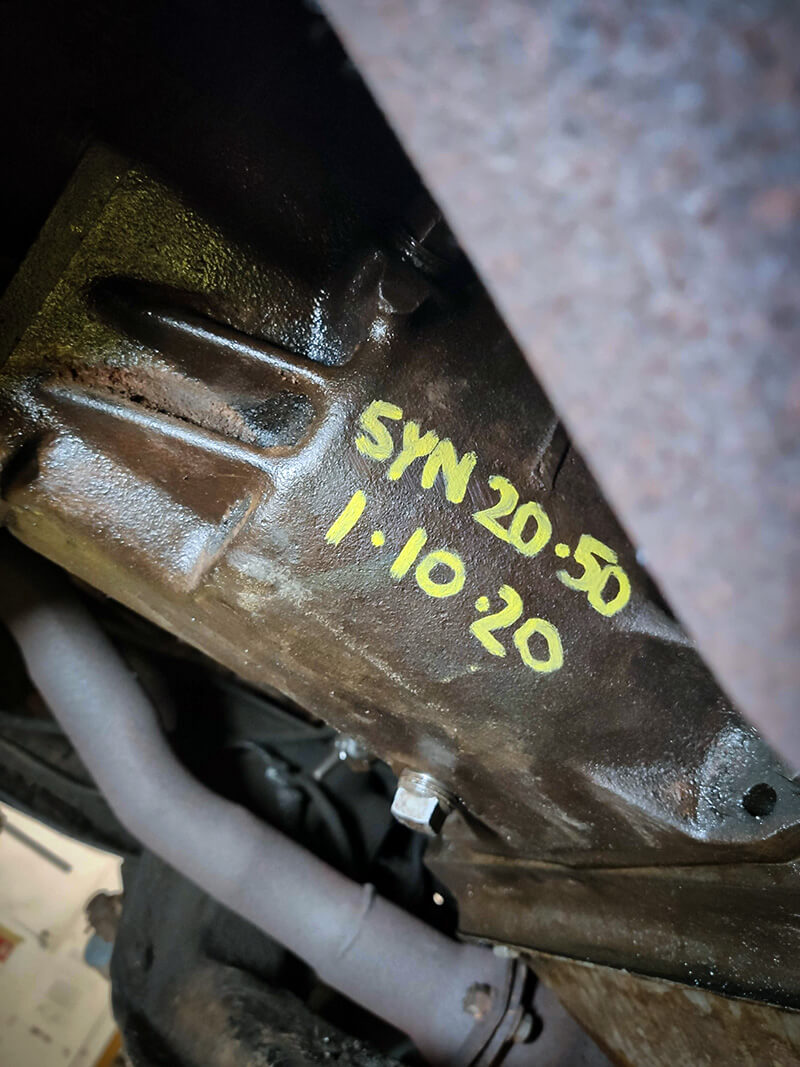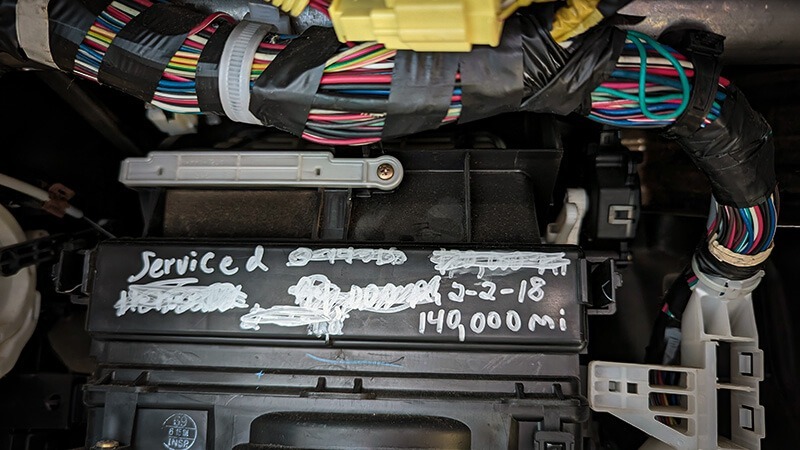Using your shop’s Cost of Doing Business (CODB) as a baseline for labor rates.

In the modern age, it’s plenty easy to pull a vehicle’s service history; even the smallest shops have implemented shop management software. Paper tracking has become less and less important as time has marched on.
Similarly, customers are less and less likely to keep good paper records. Even if they did, the trend has been to protect customer privacy more aggressively. Part of the way this is achieved is by not handing service records over when vehicles change owners through most dealers. It breaks my heart to see thick piles of receipts go right into the round file.

This brings us to the meat and potatoes of this article: consider writing service info right on the component that got attention. Mileage, date, and fluid used are all pretty helpful. To my way of thinking, this accomplishes the task of making a customer’s life easier because a mechanic’s life became easier. If it’s YOU under the hood next time, you can see with a glance what may or may not need attention. And if your customer picks up and scoots out of town, the next tech will be able to recommend service confidently. Heck, we all see oil filters marked up like this. Let’s just extend the idea a bit further to more costly and less-frequently-performed services.

Obama-era coolant should be a gimme-putt for a service writer to sell. Photo: Lemmy.
All too often when a new car comes to me, I recommend service based on the current recommended interval, but there are some items—timing belts come to mind—that don’t always display problems when visually inspected. We can’t really tell how many miles a t-belt has on it. Absent physical damage, if the customer doesn’t remember when it was done, you’re in the unfortunate position of being forced into recommending a service the car may not need.
Unless the previous tech wrote some mileage or slapped a sticker under the hood. Then you’re golden. I’ve gotten aggressive about doing this over the years. Here are a few things that live in my box and I guarantee at least a few live in yours:

Love to see it. Photo: Lemmy.
Doing this makes our lives easier and other techs’ lives easier, but it’s also dead easy to sell a customer on something if you snap a photo. You might recommend a cabin air filter that’s “dirty” and get mixed sales results. This picture of a 6-year-old service date was pretty compelling to the vehicle owner, though.
So there you have it—a low-tech, surefire way to be sure service records stay with the car.
The articles and other content contained on this site may contain links to third party websites. By clicking them, you consent to Dorman’s Website Use Agreement.
Participation in this forum is subject to Dorman’s Website Terms & Conditions. Please read our Comment Policy before commenting.